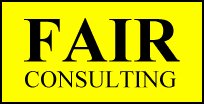Foodborne Illiness
Microborganisms |
Infection or Intoxication |
Oxygen Requirement |
Foods Implicated |
Prevention |
|---|
| Bacillus cereus | Intoxication | Facultive | Vegatables/meat dishes, rice, grains. | Cool, Hot Hold, Rapid Reheat |
| Clostridium botulisum | Intoxication | Anaerobic | Low Acid foods, meat, poultry, seafood products, canned vegatables, potatoes (bakes & salad), onions, butter, flavored oils. | Heat processing, Cool. Reheat. Use Approved Sources. |
| Staphylococcns sureus | Intoxication | Facultive | Cooked high protien foods, meat, meat and egg salads, cream pastry. | Cools store. Cool. Prevent cross contamination. Toxin survives cook, cool, freeze, nitrites. |
| E. Coli 0157.H7 | Toxin Medicated Infection | Facultive | Raw ground beef, pork, poultry, lamb. | Cook 155?F. Prevent cross contamination. Proper personal hygiene. Safe food supply. |
| Campylobacter jojuni | Infection | Perfer low oxygen | Raw Milk, poulty, eqqs, contaminated water. | Cook 165?F. Prevent cross contamination. Proper persona hygiene. |
| Listeria monocylogenes | Infection | Facultive | Raw Milk, soft cheese, raw vegatables, raw & cooked smoked fish, raw fermented sausages. | Cook 155?F. Prevent cross contamination. Use pasturized products. |
| Salmonella | Infection | Facultive | Raw meats, specially poultry & eggs, dairy products, cream-filled desserts, and foods without futher cooking. | Cook 165?F. Prevent cross contamination. |
| Shigella Dysentery | Infection | Facultive | salad, noodle salad, meat salads, raw vegatable salad, dairy products, poultry. | Prevent cross contamination. Proper personal hygiene. Safe food supply. |
| Anisakiasis | Parasite | Facultive | Raw Fish | Cook 145?F. Prevent cross contamination. Safe food supply.
Do not eat raw fish. |
| Trichinella spiralis | Parasite | Facultive | cooked meats, game animals | Cook 155?F. Prevent cross contamination. Safe food supply. |
| Hapititas A | Viral Infection | Facultive | Contaminated water, ready to eat foods, or drug related. | Prevent cross contamination or cross-connection. Proper personal hygiene & avoid cariers and fecal oral contamination. Immunizations. |
| Ciquatera | Toxin | Facultive | Tropical and large reef fish. | Cook 145?F. Prevent cross contamination. Safe food supply. |

